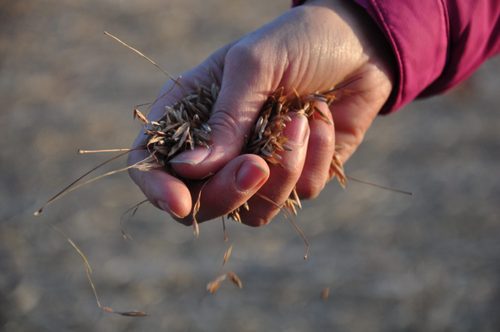
When Fall descends on the Arb, it means it’s time for one of the most important activities that happens all year: prairie planting. This year Arb staff planted in areas that had last seen management in 1986. Restoring fields that have been fallow for 25 years is no simple process, however. In order to get to the point where seeds can be planted, the fields must be prepared.
Typically fields are in agriculture for at least two years (the fields that were planted this fall were in soy beans), in order to churn the soil and hopefully get rid of some of the unhelpful seeds and weeds hiding there. The prairie seeds are collected well ahead of time from other parts of the Arb, or McKnight Prairie (a true prairie remnant owned by Carleton), and are sorted, cleaned, weighed, and counted before they go into the ground.
After spreading the seed by hand with the help of the Arb Crew and some wonderful volunteers, the next step is to sit back and let spring take over so the seeds can grow. The newly planted prairie will be mowed once or twice during their first year of growth to remove the weed canopy, so the younger prairie plants can get primary access to the sun. Mowing also helps prevent weeds from going to seed. Within two to three years, the new fields begin to look like real prairies!
Here in the Arboretum, the goal is to create large blocks of prairie habitat, with all the planted prairies connected to each other, in order to provide habitat for the larger animals like birds and mammals. This connectedness also fosters exchange of seeds, microbes, and important pollinating insects between areas.
Add a comment